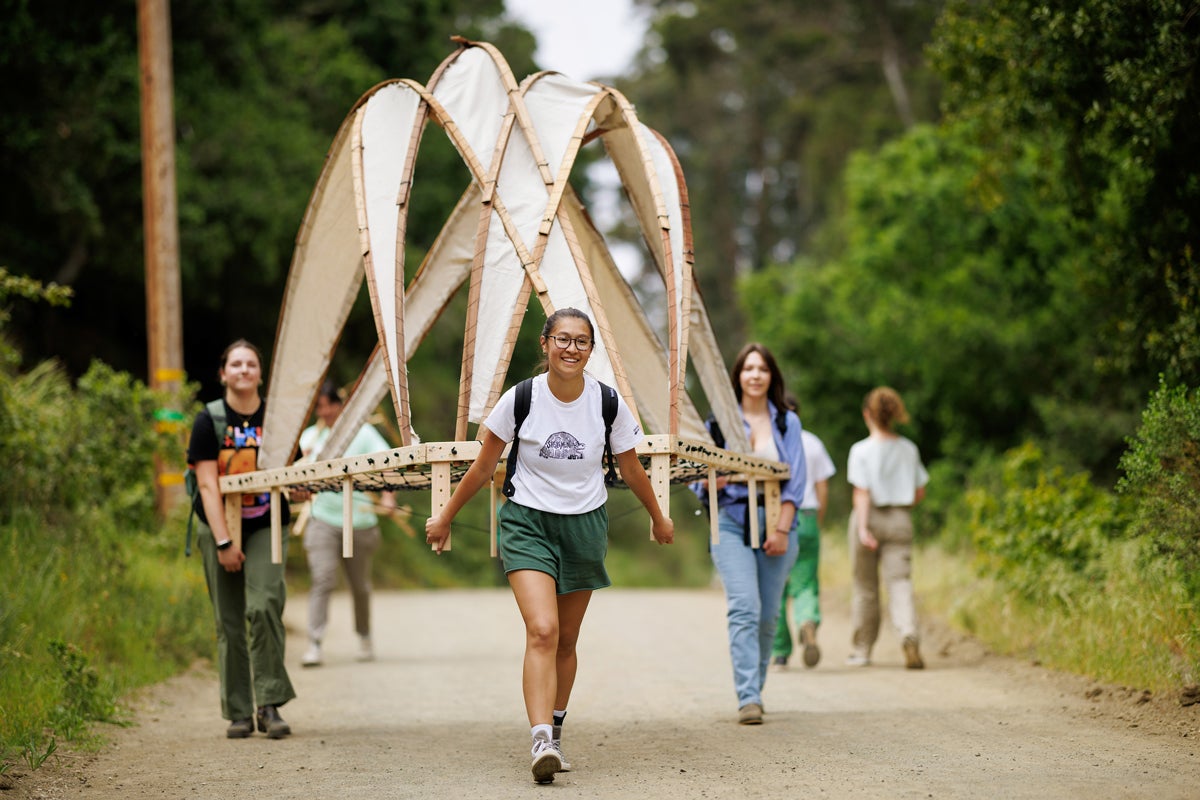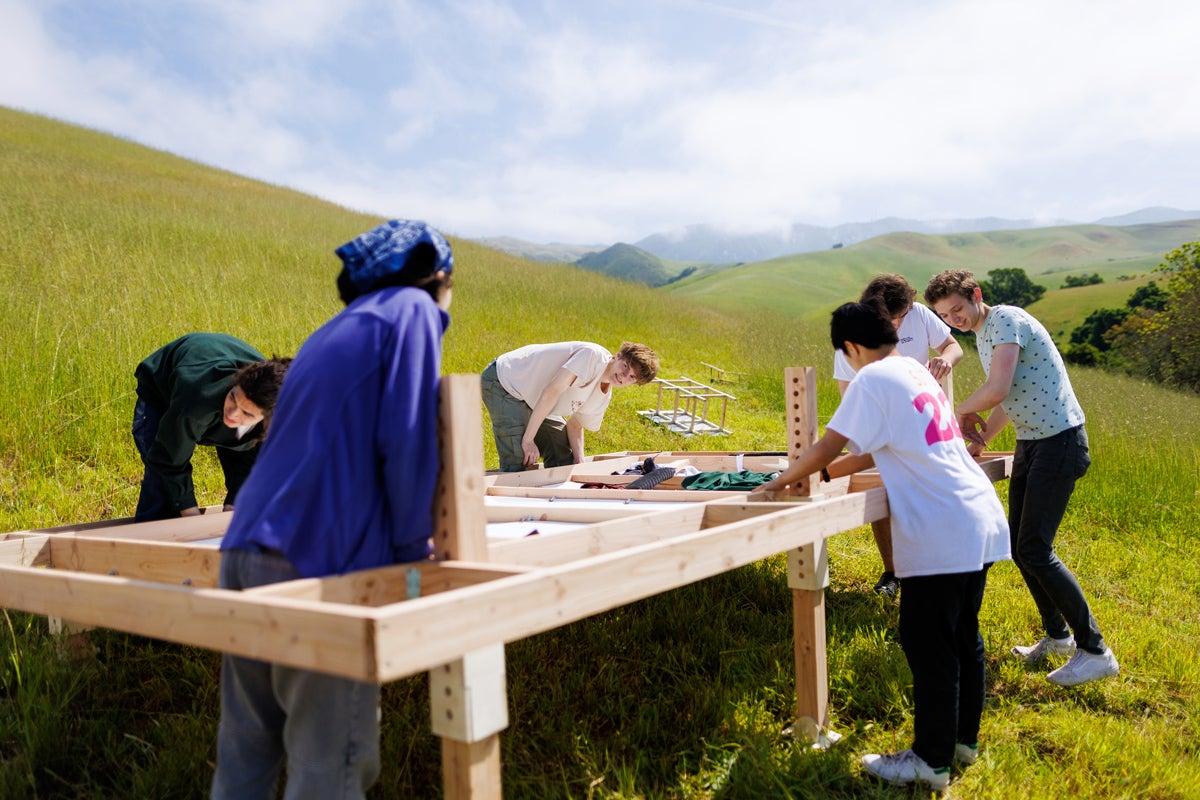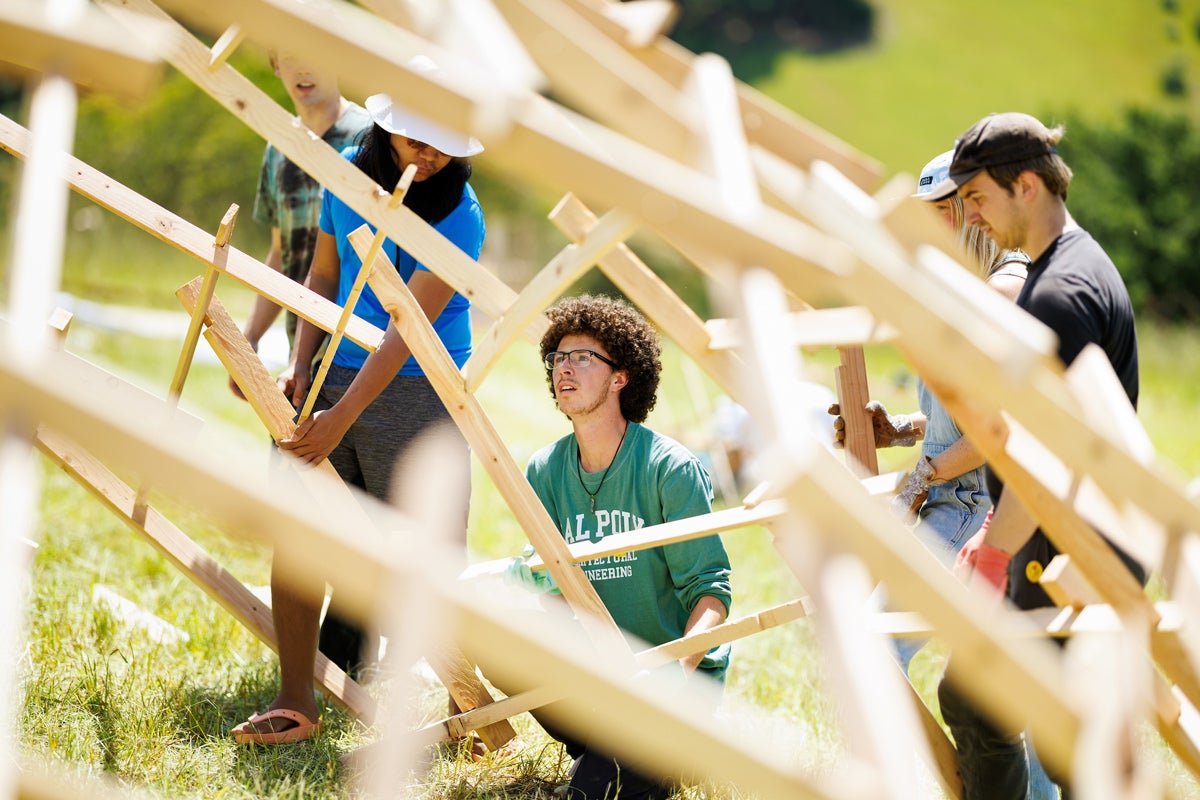Design Village Brings Students Closer to Nature

The coastal fog hanging over Cal Poly on April 28 soon gave way to sunny skies as teams of students lugged parts of self-built structures up a dirt road to Poly Canyon. Once they reached their destination — the College of Architecture and Environmental Design's outdoor Experimental Structures Laboratory — they faced one last push up the sloping hills of the canyon to find a spot to set up their structure, which they would inhabit for the weekend.
“This is definitely the biggest project most of us here have ever done,” first-year architecture student Claire Enright said while standing next to “Bamboozled,” a structure comprised of canvas hammocks attached to 14 sticks of bamboo. “It was a big jump from building models to a structure for seven people.”

The Design Village competition is an annual, highly anticipated event for the college — and a key course for first-year architecture students. True to its long-standing emphasis on hands on, project-based learning, competitors work in teams to design and build inhabitable structures within the canyon, which they must transport a mile up Poly Canyon Road, set up and disassemble at the end of the weekend.
Students also honored Cal Poly architectural engineering first-year student Sean Hillman, who passed away a few days prior to the competition following a bicycle collision. Some students wore green in his honor or printed his name on their structures, and a remembrance was held the first evening of Design Village.
Structures were designed with this year’s theme in mind: “Biophilia,” the innate human instinct to connect with nature and other living beings. “The Pod Squad” designed their structures as a group of flowers with recycled bedsheet “petals” that could open and collapse like an accordion. They looked to rain lilies for inspiration, which represented new beginnings for the team as first-year students and individuals journeying into the world of architecture.
“It took three or four days of sewing,” first-year architecture student Trinity Carrizosa said, pointing out some of the 600 fabric loops connecting the bedsheets to wooden frames. “That was the real Learn by Doing test — teaching ourselves to sew.”
The team, which also included architectural engineering students, received some feedback from fourth-year construction management students.
“We were constantly talking back and forth,” Carrizosa added, “which is so important, since in my career I’ll be doing that as well. It taught me how to work as a team and with a community in all sorts of professions.”

Nearby, a colony of mushroom caps was springing to life under the care of a cluster of students wearing red polka-dotted caps.
Sarah Kula, a first-year architectural engineering major, said the “Amanita” (genus of several hundred species of mushroom) team worked through several designs before settling on a tripod shape for their structures.
“We had a bunch of designers, and it was my job to run the numbers,” Kula said. “And now the numbers I ran are physically represented before us — and it works. There’s a wonderful sense of accomplishment with that. It’s the entire rationale of Learn by Doing, right here in front of us.”
The overall winner of the event was "The Spins" team from Cal Poly. The six finalists were:
- "Orqas," Diablo Valley College
- "Palm Patrol," Cal Poly
- "Twisted," Cal Poly
- "The Recipocators," Cal Poly
- "05 Collaborative," Cal Poly
- "Floral Based Boma," Fresno City College
Want more Learn by Doing stories in your life? Sign up for our monthly newsletter, the Cal Poly News Recap!











